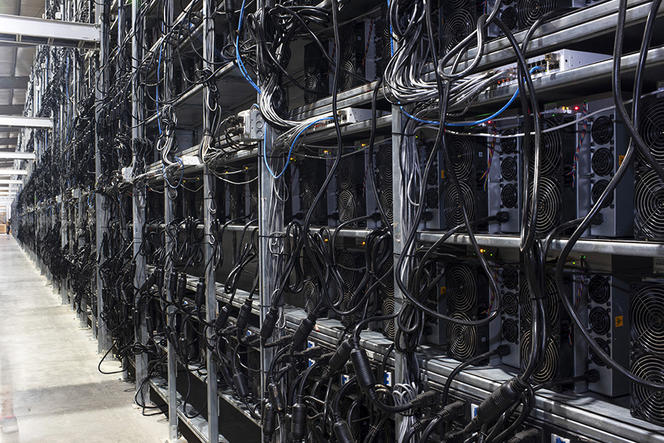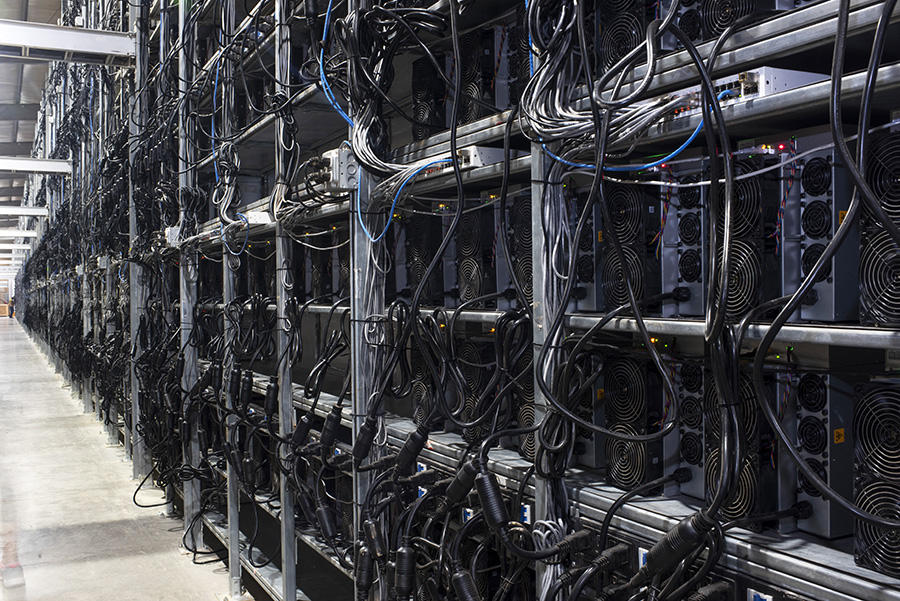You are here
A tremendously costly error
Since the launch of the Bitcoin1 network in January 2009, the tokens it issues have skyrocketed in value, rising from an initial price of $0 to nearly $69,000 each in November 2021, before falling to the $40,000 range a month later. In addition to this volatility, which has prompted some to see Bitcoin as a speculative bubble, the network has another major drawback, the enormous energy consumption it requires. This absurd expenditure can be considered a design flaw, one that has been solved by other cryptoassets, which are gradually establishing themselves under names such as Solana, Cardano, Polkadot, etc.
While nearly 15,000 cryptocurrencies have been created in its wake, Bitcoin remains predominant, with a capitalisation fluctuating around $1 trillion, representing approximately 40% of the capitalisation of all cryptoassets.
Digital coalmines
How does a cryptocurrency operate? Why is there a flaw at the heart of Bitcoin? The Bitcoin network was conceived by one or more individuals acting under the name Satoshi Nakamoto, whose real identity remains unknown to this date. Cryptocurrency tokens are issued and circulated by a network of computers called “validators”, which function peer-to-peer and in decentralised fashion. Each of the network’s computers has a copy of an enormous file called a “blockchain”, an account book that over time records all transfers of tokens from one account to another. To encourage the computers participating in this network management, an incentive is periodically distributed to those who validate and add new blocks of transactions to the blockchain.
In the case of Bitcoin, one such block is added to the blockchain every 10 minutes, and newly-created bitcoins (currently 6.25 of them) are allocated to the miner who proposed the block, which is then approved by other validators. The winning validator is identified through the proof of work (POW) method, in which proof is established through a raw computer processing power challenge known as mining. The network’s verifiers (or miners) must solve a computational puzzle, with the fastest “winning” the bitcoins created. The problem, which changes every 10 minutes, requires participants to compute a certain hash function: the faster they do so, the greater their chances of obtaining a distribution of the incentive. For example, possessing 5% of the network’s total computing power would provide a 5% chance of winning each competition. POW thus creates emulation between validators, prompting them to use specialised chips – and to consume more and more electricity to power them.
Yet all of this energy invested in producing – and especially operating – these specialised machines serves no purpose other than to identify the verifier who receives the incentive. The electricity used to manage the network’s transactions has gradually become negligible in comparison to that needed for the computing competition. The relation between the two has been estimated as being at least 1,000 to 1.
From proof of work to proof of stake
Other blockchains have deployed a new and much less energy-intensive method for choosing the validator who will add a block, known as proof of stake (POS). With POS, each verifier stakes an amount of money as collateral (the cryptocurrency under consideration), with the probability of winning the incentive at each distribution being proportional to the amount of this collateral. This stake can be withdrawn at any time, like money deposited in a savings account. POS is a kind of POW that enables to recover the agreed-upon investment required for participation, whereas in POW this investment is lost. In both cases, the system favours those who have substantial means to stake, but this is inevitable in order to protect against attacks based on the mass creation of false identities. It is important to note that most of the electricity consumed by a network using POW is not used for exchanges or for controls by validators, but rather for the network’s computing challenge.

Over the years, the investments and expenses assumed by Bitcoin miners in order to participate in the competition has taken on proportions commensurate with the price of a bitcoin, which increased 500-fold between 2013 and 2022. The electricity consumption of Bitcoin miners can be calculated in a number of ways. A distinction is made between the “minimal value” of this expenditure – based on the most favourable evaluations – and the “estimated value” based on the presumed consumption of mining farms. The minimal value of the Bitcoin network’s consumption today reaches 50 TWh per year, in other words the production of six medium-power nuclear reactors, or 10% of France’s total electricity production. The estimated value is two to four times greater.
Banning Bitcoin?
Most specialists believe that the security provided by POS is equivalent to that of POW: no cryptocurrency operating using POS has yet suffered a successful attack, despite the hundreds of billions of euros they capitalise. This suggests that POW is a design flaw.
The only thing that ensures its survival is the support and lobbying of those who hold cryptocurrencies based on POW. Their high prices lead to absurd waste, and even encourage it. There are two possible solutions. The first is to ban all cryptocurrencies as China did in 2021, which ended mining in that country, but unfortunately promoted it elsewhere, especially in the United States where it has become particularly profitable. The second solution – defended for example by Sweden, which would like to see it applied throughout Europe – involves banning POW, which is the sole cause behind the electric extravaganza of some cryptocurrencies.
The points of view, opinions and analyses published in this column are the author’s sole responsibility. In no way do they reflect a position on the part of the CNRS.
Further reading (in French):
Jean-Paul Delahaye: “La folie électrique du Bitcoin,” Pour la science no. 484, 80-85, February 2018.
• Jean-Paul Delahaye. Au-delà du Bitcoin. Introduction aux blockchains et aux cryptomonnaies, Dunod, 2022 (forthcoming).
Further information:
Websites (in English) that estimate Bitcoin’s energy consumption:
• https://digiconomist.net/bitcoin-energy-consumption
• https://ccaf.io/cbeci/index
About Sweden’s request:
https://www.numerama.com/tech/758522-interdire-le-minage-de-bitcoin-dans...
https://www.zdnet.com/article/cryptocurrency-should-bitcoin-mining-be-cu...
https://www.euronews.com/next/2021/11/12/europe-must-ban-bitcoin-mining-...
- 1. Bitcoin is capitalised when it refers to the peer-to-peer payment system, not when it relates to the currency unit.










